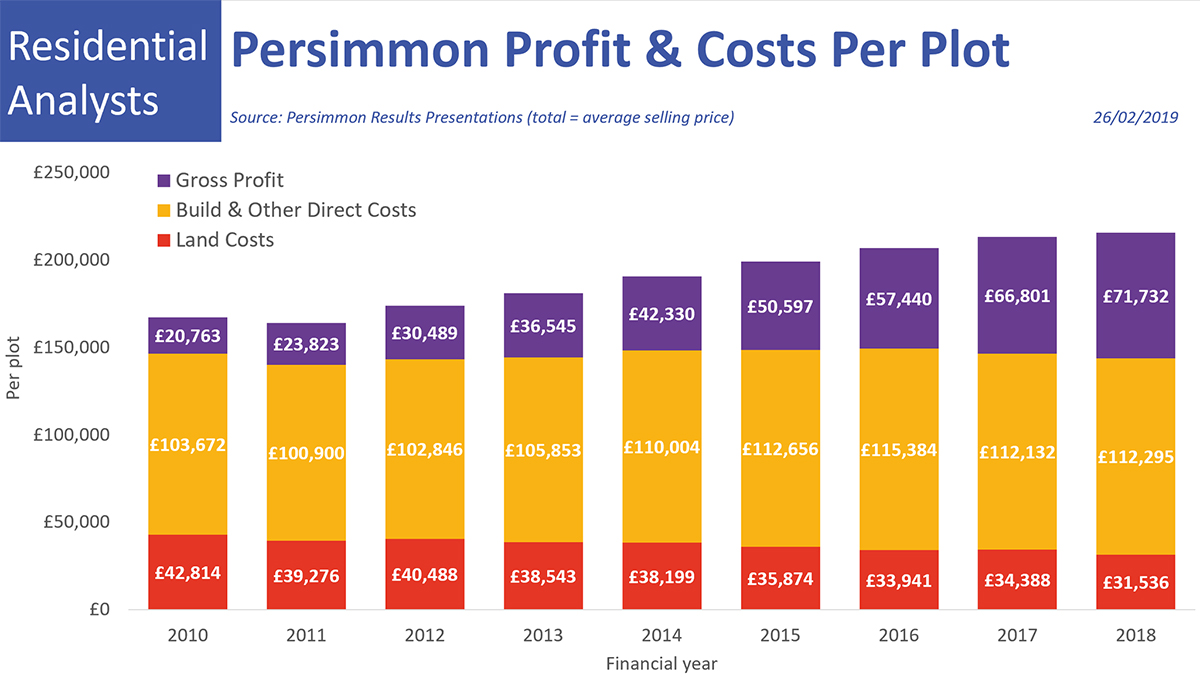You are viewing 1 of your 1 free articles
 Jules Birch
Jules BirchThe Help to Buy horse has long since bolted
James Brokenshire’s comments over the past few days show the problems with Help to Buy are at last dawning on the government, but it is too late, warns Jules Birch
All the headlines this week are about Persimmon and Help to Buy but the issues with housebuilding are much bigger than either.
Yes, Persimmon is the most extreme example of the gains made on the back of state intervention, with profit of £1bn and margins of more than 30% to go with those huge executive bonuses that made it the poster child for corporate excess in the industry.
And, yes, Help to Buy supported almost half of its 13,341 private completions in 2018 and a major part of the rest of the industry’s output.
Public and media outrage has now reached the point where ministers feel they have to act, and housing secretary Mr Brokenshire let it be known over the weekend that he has “become increasingly concerned by the behaviour of Persimmon in the last 12 months”.
“House builders realised some time ago that things have gone too far”
Citing problems with leasehold, build quality and accountability to customers, a source told The Times that it would be “surprising if Persimmon’s approach wasn’t a point of discussion” when contracts for the extension of Help to Buy after 2021 are reviewed.
House builders realised some time ago that things have gone too far, with some pointing out that they never asked for Help to Buy to be extended, but they also have to meet city expectations of ever-increasing profits and returns to shareholders.
And the issues go much deeper than profit and bonuses, and much wider than one company.
Persimmon was one of three major house builders reporting this week and both of the others were at the centre of the previous industry scandals alluded to by Mr Brokenshire.
Taylor Wimpey (leasehold) reported profit of £880m and revealed that it will pay dividends of £600m to shareholders in 2019. Profit at Bovis Homes (quality) bounced back to £168m and it is set to double its dividends.
As for Persimmon, the company has come to epitomise a hard-nosed approach to the business but the spectacular returns generated by its bonus scheme (even after some of them were returned voluntarily) suggest that even it was taken by surprise by the scale of the boom in its profit and share price.
This was not just the result of Help to Buy but also of a decade of highly favourable market conditions for house builders after they survived (some of them only by the skin of their teeth) the credit crunch and global financial crisis.
Demand was supported by record low interest rates while supply was facilitated by relatively easy land, materials and labour markets. Add relentless focus on minimising costs and maximising prices and you have the recipe for the boom that followed.
This chart tweeted by Neal Hudson of Residential Analysts breaks down Persimmon’s costs and profits per building plot:
Note that building costs have been relatively stable since 2010 while land costs have actually fallen significantly. Gross profits have more than trebled.
Just to rub it in, Persimmon’s presentation to city analysts also boasts of £732m of ‘surplus capital’ returned to shareholders.
All of which throws the question of whether Help to Buy was really necessary into sharp relief.
The scheme was born out of political concern about falling homeownership and a desire to boost the number of first-time buyers as a way of addressing it.
Housebuilding output has increased but not remotely as much as profits, bonuses and dividends, and how many of those homes would have been built anyway?
“Most of Help to Buy has comprised equity loans to buyers that have benefited house builders indirectly by reducing their risks”
First-time buyer numbers are also up but the housing market is still dysfunctional because of a lack of home movers.
Most of Help to Buy has comprised equity loans to buyers that have benefited house builders indirectly by reducing their risks and directly by enabling them to reduce or eliminate the incentives they would otherwise have been forced to offer and arguably by raising their prices in a captive market.
House builders have historically offered similar schemes of their own to help customers lacking a deposit – these were widespread in the 1930s and arguably mortgage packages like this one offered by Bovis in 2010 would have become commonplace in the past few years in the absence of a government scheme.
The forerunners of Help to Buy – HomeBuy Direct and NewBuy – were both co-funded by house builders and the government.
But this is not just about Help to Buy. Back in 2010, I blogged about how the government’s drive to cut red tape by relaxing regulations on sustainability and affordable housing would boost the value of house builders’ land holdings by billions.
By 2012, the effect was already evident in soaring profit levels and I asked why a government so concerned about ‘taxpayer-subsidised’ housing was benefitting big house builders without expecting any quid pro quo.
Both of those were written before George Osborne launched Help to Buy in 2013 and before it was extended until 2021 and then again until 2023.
The latest extension is at least restricted to first-time buyers and there will be regional price caps on homes eligible for the scheme.
Mr Brokenshire’s comments this week show that it has at last dawned on ministers that the government should be asking for something in return and imposing more conditions for participation.
But he is thinking about shutting the stable door when the horse has long since bolted.
Jules Birch, award-winning blogger












